Driving Safety Area Classification for Automated Vehicles Based on Data Augmentation Using Generative Models
Abstract
1. Introduction
- This study develops a comprehensive framework to accurately identify safe automated driving areas with limited real-world experimental data.
- This study incorporates oversampling-based tabular data augmentation into the proposed framework to address the class imbalance by generating synthetic instances.
- This research demonstrates the effectiveness of the proposed framework based on performance evaluations with various metrics.
2. Methodology
2.1. Framework for Improving the Generalized Performance of a Classifier with Tabular Data
2.2. Oversampling-Based Tabular Data Augmentation Model
2.2.1. Synthetic Minority Oversampling Technique (SMOTE)
2.2.2. Conditional Tabular Generative Adversarial Network (CTGAN)
2.2.3. Tabular Data with Denoising Diffusion Probabilistic Models (TabDDPMs)
2.3. Classifier Model for Identifying the Driving Safety Road Sections of AVs
3. Data Description and Performance Metrics
3.1. Data Description
3.2. Performance Metrics
4. Result and Analysis
4.1. Performance Review
4.2. Comparative Study
5. Conclusions
Funding
Institutional Review Board Statement
Informed Consent Statement
Data Availability Statement
Conflicts of Interest
References
- Choi, S.; Lee, D.; Kim, S.; Tak, S. Framework for connected and automated bus rapid transit with sectionalized speed guidance based on deep reinforcement learning: Field test in Sejong city. Transp. Res. Part C Emerg. Technol. 2023, 148, 104049. [Google Scholar] [CrossRef]
- Oh, S.; Lentzakis, A.F.; Seshadri, R.; Ben-Akiva, M. Impacts of Automated Mobility-on-Demand on traffic dynamics, energy and emissions: A case study of Singapore. Simul. Model. Pract. Theory 2021, 110, 102327. [Google Scholar] [CrossRef]
- Hyland, M.; Mahmassani, H.S. Operational benefits and challenges of shared-ride automated mobility-on-demand services. Transp. Res. Part A Policy Pract. 2020, 134, 251–270. [Google Scholar] [CrossRef]
- Tak, S.; Kim, J.; Lee, D. Study on the Extraction Method of Sub-Network for Optimal Operation of Connected and Automated Vehicle-Based Mobility Service and Its Implication. Sustainability 2022, 14, 3688. [Google Scholar] [CrossRef]
- Shladover, S.E. Connected and automated vehicle systems: Introduction and overview. J. Intell. Transp. Syst. 2018, 22, 190–200. [Google Scholar] [CrossRef]
- Guanetti, J.; Kim, Y.; Borrelli, F. Control of connected and automated vehicles: State of the art and future challenges. Annu. Rev. Control 2018, 45, 18–40. [Google Scholar] [CrossRef]
- Elliott, D.; Keen, W.; Miao, L. Recent advances in connected and automated vehicles. J. Traffic Transp. Eng. Engl. Ed. 2019, 6, 109–131. [Google Scholar] [CrossRef]
- Zhao, X.; Robu, V.; Flynn, D.; Salako, K.; Strigini, L. Assessing the safety and reliability of autonomous vehicles from road testing. In Proceedings of the 2019 IEEE 30th International Symposium on Software Reliability Engineering (ISSRE), Berlin, Germany, 28–31 October 2019; pp. 13–23. [Google Scholar]
- De Gelder, E.; Camp, O.O.D. Procedure for the safety assessment of an autonomous vehicle using real-world scenarios. arXiv 2020, arXiv:2012.00643. [Google Scholar]
- Wang, X.; Qin, D.; Cafiso, S.; Liang, K.K.; Zhu, X. Operational design domain of autonomous vehicles at skewed intersection. Accid. Anal. Prev. 2021, 159, 106241. [Google Scholar] [CrossRef]
- Gouda, M.; Chowdhury, I.; Weiß, J.; Epp, A.; El-Basyouny, K. Automated assessment of infrastructure preparedness for autonomous vehicles. Autom. Constr. 2021, 129, 103820. [Google Scholar] [CrossRef]
- Feng, S.; Feng, Y.; Yu, C.; Zhang, Y.; Liu, H.X. Testing scenario library generation for connected and automated vehicles, part I: Methodology. IEEE Trans. Intell. Transp. Syst. 2020, 22, 1573–1582. [Google Scholar] [CrossRef]
- Kim, J.; Kee, S. A Research on the ODD and OEDR Guidelines Based on the Demonstration Case of Autonomous Driving in Sejong City. Trans. Korean Soc. Automot. Eng. 2020, 28, 659–668. [Google Scholar] [CrossRef]
- Sun, C.; Deng, Z.; Chu, W.; Li, S.; Cao, D. Acclimatizing the operational design domain for autonomous driving systems. IEEE Intell. Transp. Syst. Mag. 2021, 14, 10–24. [Google Scholar] [CrossRef]
- Tak, S.; Kim, S.; Yu, H.; Lee, D. Analysis of relationship between road geometry and automated driving safety for Automated Vehicle-based Mobility Service. Sustainability 2022, 14, 2336. [Google Scholar] [CrossRef]
- Zhang, F.; Li, C.; Yang, F. Vehicle detection in urban traffic surveillance images based on convolutional neural networks with feature concatenation. Sensors 2019, 19, 594. [Google Scholar] [CrossRef] [PubMed]
- Ji, H.; Gao, Z.; Mei, T.; Li, Y. Improved faster R-CNN with multiscale feature fusion and homography augmentation for vehicle detection in remote sensing images. IEEE Geosci. Remote Sens. Lett. 2019, 16, 1761–1765. [Google Scholar] [CrossRef]
- Wang, Z.; Huang, J.; Xiong, N.N.; Zhou, X.; Lin, X.; Ward, T.L. A robust vehicle detection scheme for intelligent traffic surveillance systems in smart cities. IEEE Access 2020, 8, 139299–139312. [Google Scholar] [CrossRef]
- Pillai, A.S. Traffic Surveillance Systems through Advanced Detection, Tracking, and Classification Technique. Int. J. Sustain. Infrastruct. Cities Soc. 2023, 8, 11–23. [Google Scholar]
- Chawla, N.V.; Bowyer, K.W.; Hall, L.O.; Kegelmeyer, W.P. SMOTE: Synthetic minority over-sampling technique. J. Artif. Intell. Res. 2002, 16, 321–357. [Google Scholar] [CrossRef]
- Han, H.; Wang, W.; Mao, B. Borderline-SMOTE: A New Over-Sampling Method in Imbalanced Data Sets Learning. In Proceedings of the International Conference on Intelligent Computing, Hefei, China, 23–26 August 2005; pp. 878–887. [Google Scholar]
- Douzas, G.; Bacao, F.; Last, F. Improving imbalanced learning through a heuristic oversampling method based on k-means and SMOTE. Inf. Sci. 2018, 465, 1–20. [Google Scholar] [CrossRef]
- He, H.; Bai, Y.; Garcia, E.A.; Li, S. ADASYN: Adaptive synthetic sampling approach for imbalanced learning. In Proceedings of the 2008 IEEE International Joint Conference on Neural Networks (IEEE World Congress on Computational Intelligence), Hong Kong, China, 1–8 June 2008; pp. 1322–1328. [Google Scholar]
- Islam, Z.; Abdel-Aty, M.; Cai, Q.; Yuan, J. Crash data augmentation using variational autoencoder. Accid. Anal. Prev. 2021, 151, 105950. [Google Scholar] [CrossRef] [PubMed]
- Xu, L.; Skoularidou, M.; Cuesta-Infante, A.; Veeramachaneni, K. Modeling tabular data using conditional gan. In Proceedings of the Advances in Neural Information Processing Systems 32, Vancouver, BC, Canada, 8–14 December 2019. [Google Scholar]
- Moon, J.; Jung, S.; Park, S.; Hwang, E. Conditional tabular GAN-based two-stage data generation scheme for short-term load forecasting. IEEE Access 2020, 8, 205327–205339. [Google Scholar] [CrossRef]
- Engelmann, J.; Lessmann, S. Conditional Wasserstein GAN-based oversampling of tabular data for imbalanced learning. Expert Syst. Appl. 2021, 174, 114582. [Google Scholar] [CrossRef]
- Zhang, Y.; Zaidi, N.A.; Zhou, J.; Li, G. GANBLR: A tabular data generation model. In Proceedings of the 2021 IEEE International Conference on Data Mining (ICDM), Auckland, New Zealand, 7–10 December 2021; pp. 181–190. [Google Scholar]
- Kotelnikov, A.; Baranchuk, D.; Rubachev, I.; Babenko, A. Tabddpm: Modelling tabular data with diffusion models. In Proceedings of the International Conference on Machine Learning, Honolulu, HI, USA, 23–29 July 2023; pp. 17564–17579. [Google Scholar]
- Tao, H. Erasing-inpainting-based data augmentation using denoising diffusion probabilistic models with limited samples for generalized surface defect inspection. Mech. Syst. Signal Process. 2024, 208, 111082. [Google Scholar] [CrossRef]
- Ramezan, A.C.; Warner, T.A.; Maxwell, A.E. Evaluation of sampling and cross-validation tuning strategies for regional-scale machine learning classification. Remote Sens. 2019, 11, 185. [Google Scholar] [CrossRef]
- Dutschmann, T.M.; Kinzel, L.; Ter Laak, A.; Baumann, K. Large-scale evaluation of k-fold cross-validation ensembles for uncertainty estimation. J. Cheminform. 2023, 15, 49. [Google Scholar] [CrossRef] [PubMed]
- Fonseca, J.; Bacao, F. Tabular and latent space synthetic data generation: A literature review. J. Big Data 2023, 10, 115. [Google Scholar] [CrossRef]
- Goodfellow, I.; Pouget-Abadie, J.; Mirza, M.; Xu, B.; Warde-Farley, D.; Ozair, S.; Courville, A.; Bengio, Y. Generative adversarial networks. Commun. ACM 2020, 63, 139–144. [Google Scholar] [CrossRef]
- Xu, L.; Veeramachaneni, K. Synthesizing tabular data using generative adversarial networks. arXiv 2018, arXiv:1811.11264. [Google Scholar]
- Douzas, G.; Bacao, F. Effective data generation for imbalanced learning using conditional generative adversarial networks. Expert Syst. Appl. 2018, 91, 464–471. [Google Scholar] [CrossRef]
- Ho, J.; Jain, A.; Abbeel, P. Denoising diffusion probabilistic models. In Proceedings of the Advances in neural information processing systems 33, Online, 6–12 December 2020; pp. 6840–6851. [Google Scholar]
- Breiman, L. Random forests. Mach. Learn. 2001, 45, 5–32. [Google Scholar] [CrossRef]
- Shaik, A.B.; Srinivasan, S. A brief survey on random forest ensembles in classification model. In International Conference on Innovative Computing and Communications: Proceedings of ICICC 2018; Springer: Berlin/Heidelberg, Germany, 2019; pp. 253–260. [Google Scholar]
- Hou, Y.; Edara, P.; Sun, C. Situation assessment and decision making for lane change assistance using ensemble learning methods. Expert Syst. Appl. 2015, 42, 3875–3882. [Google Scholar] [CrossRef]
- Wang, Q.; Nguyen, T.T.; Huang, J.Z.; Nguyen, T.T. An efficient random forests algorithm for high dimensional data classification. Adv. Data Anal. Classif. 2018, 12, 953–972. [Google Scholar] [CrossRef]
- Favarò, F.; Eurich, S.; Nader, N. Autonomous vehicles’ disengagements: Trends, triggers, and regulatory limitations. Accid. Anal. Prev. 2018, 110, 136–148. [Google Scholar] [CrossRef] [PubMed]
- Tengilimoglu, O.; Carsten, O.; Wadud, Z. Implications of automated vehicles for physical road environment: A comprehensive review. Transp. Res. Part E Logist. Transp. Rev. 2023, 169, 102989. [Google Scholar] [CrossRef]
- Saito, T.; Rehmsmeier, M. The precision-recall plot is more informative than the ROC plot when evaluating binary classifiers on imbalanced datasets. PLoS ONE 2015, 10, e0118432. [Google Scholar] [CrossRef]
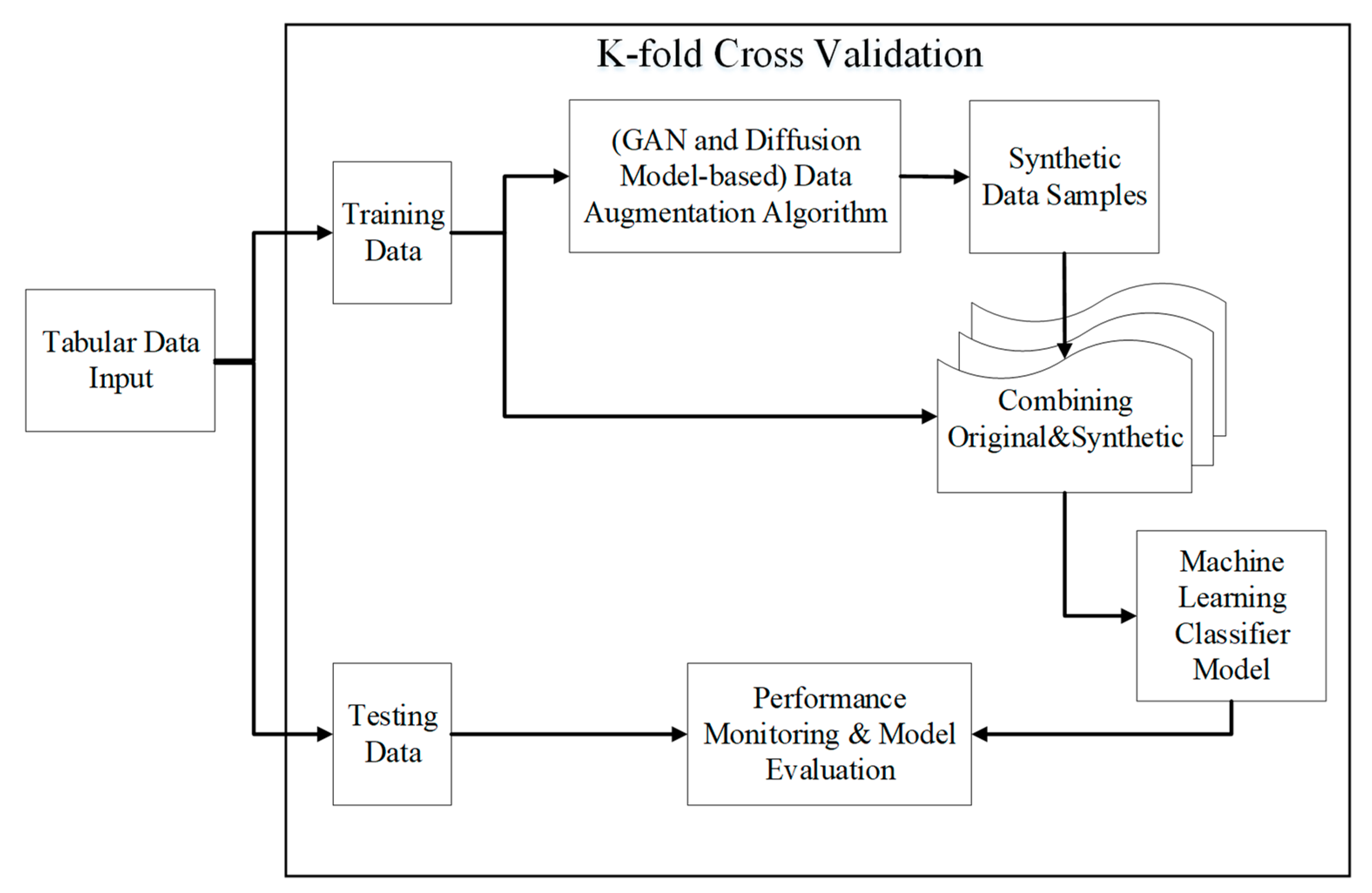
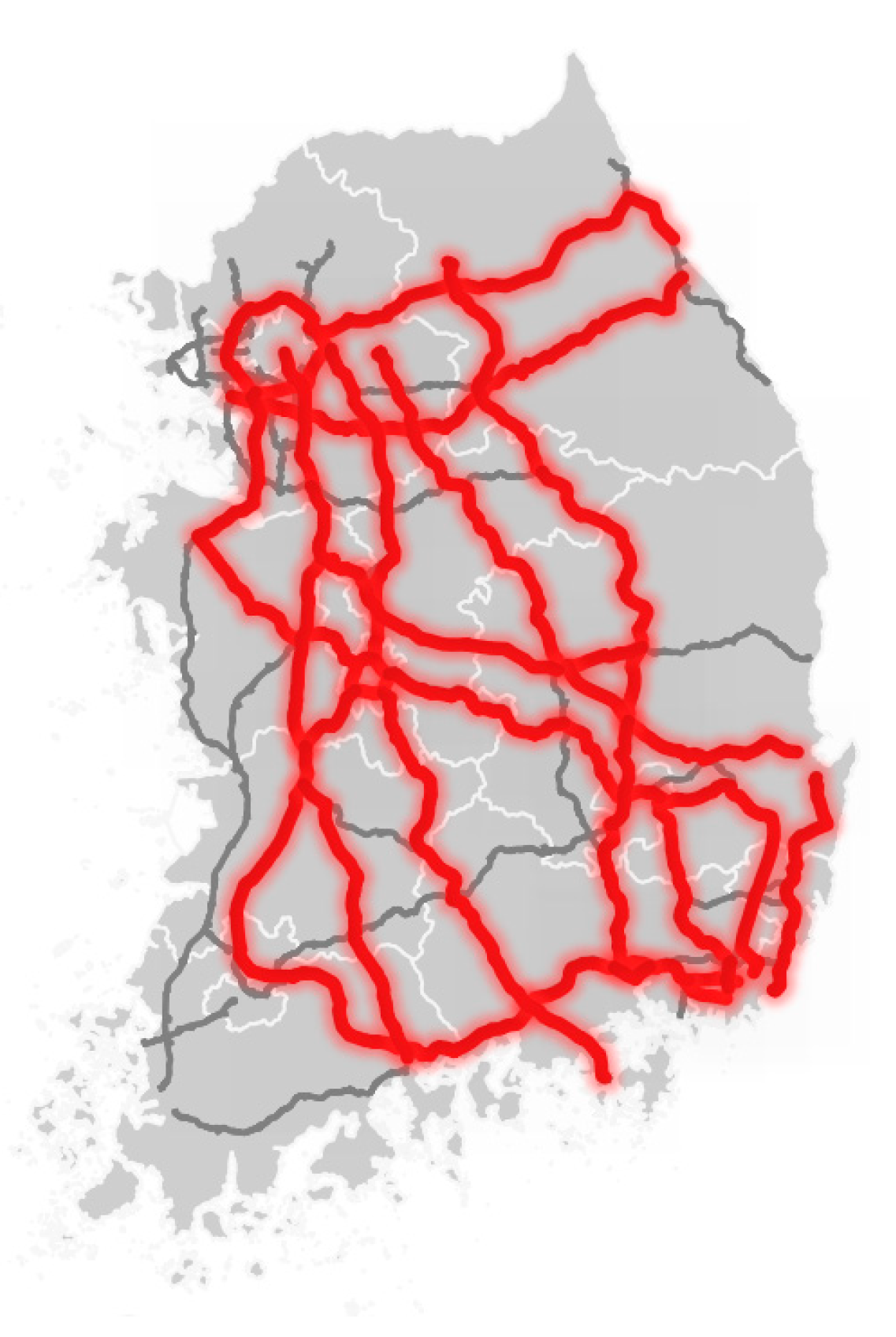
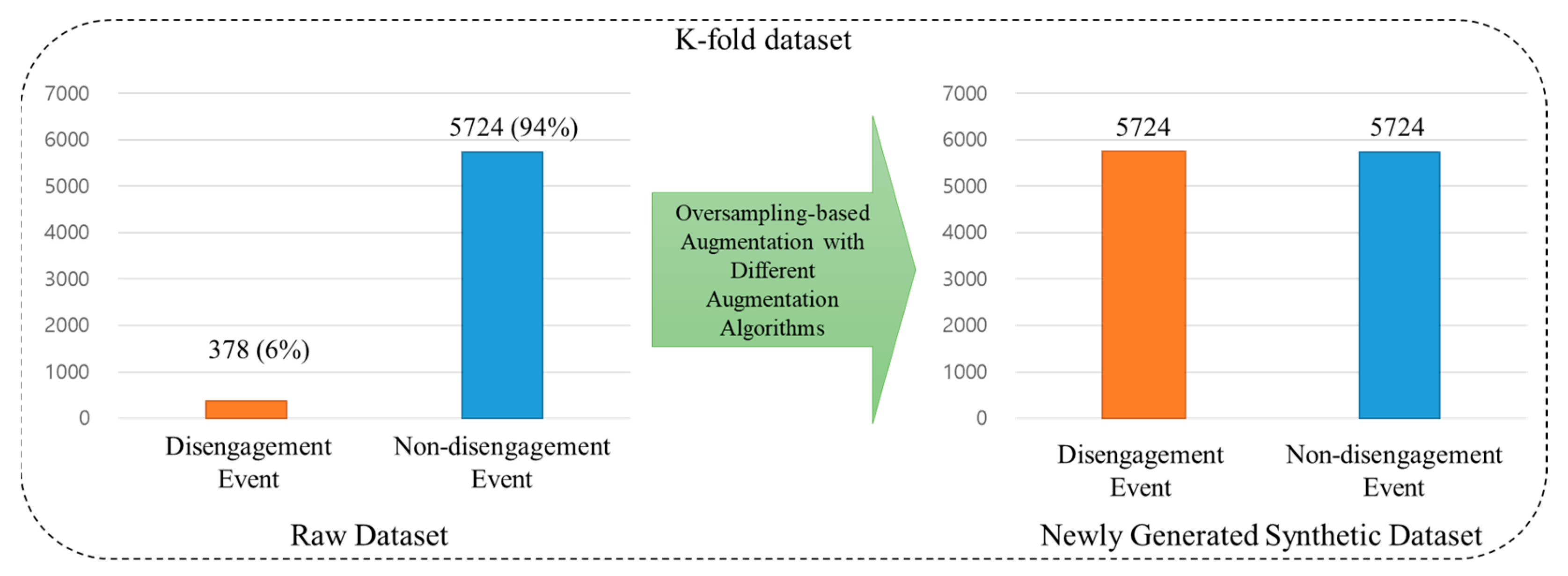

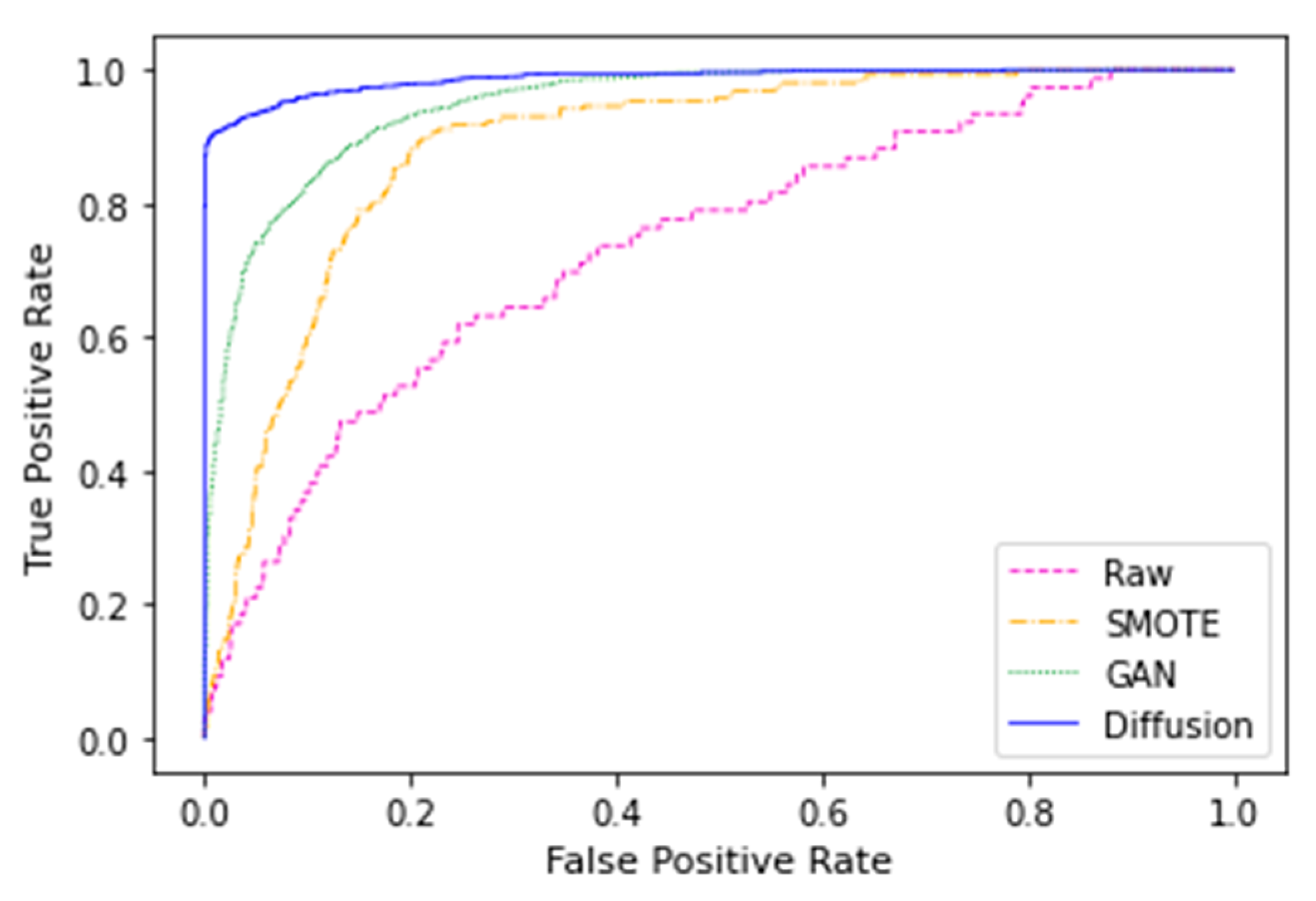
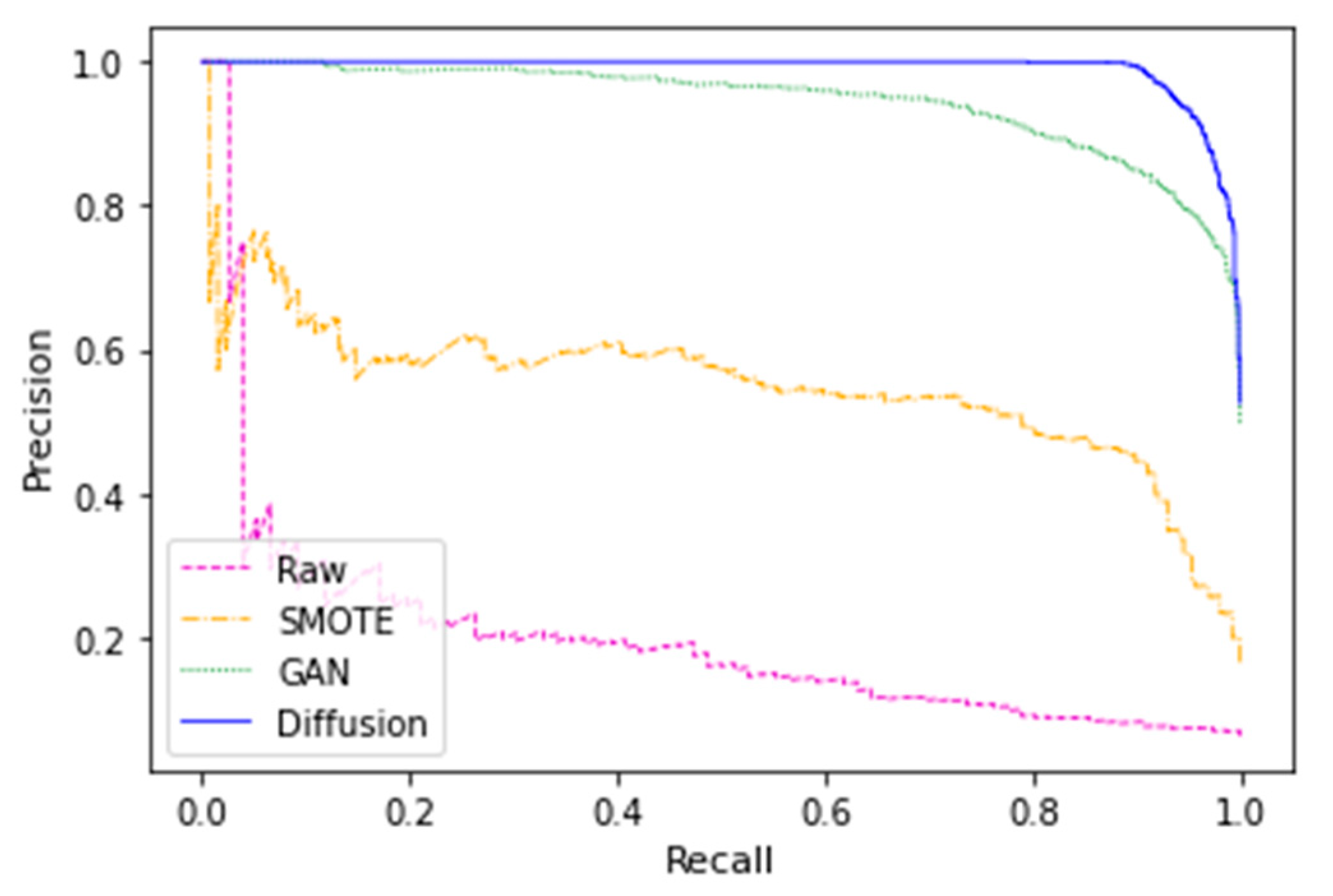
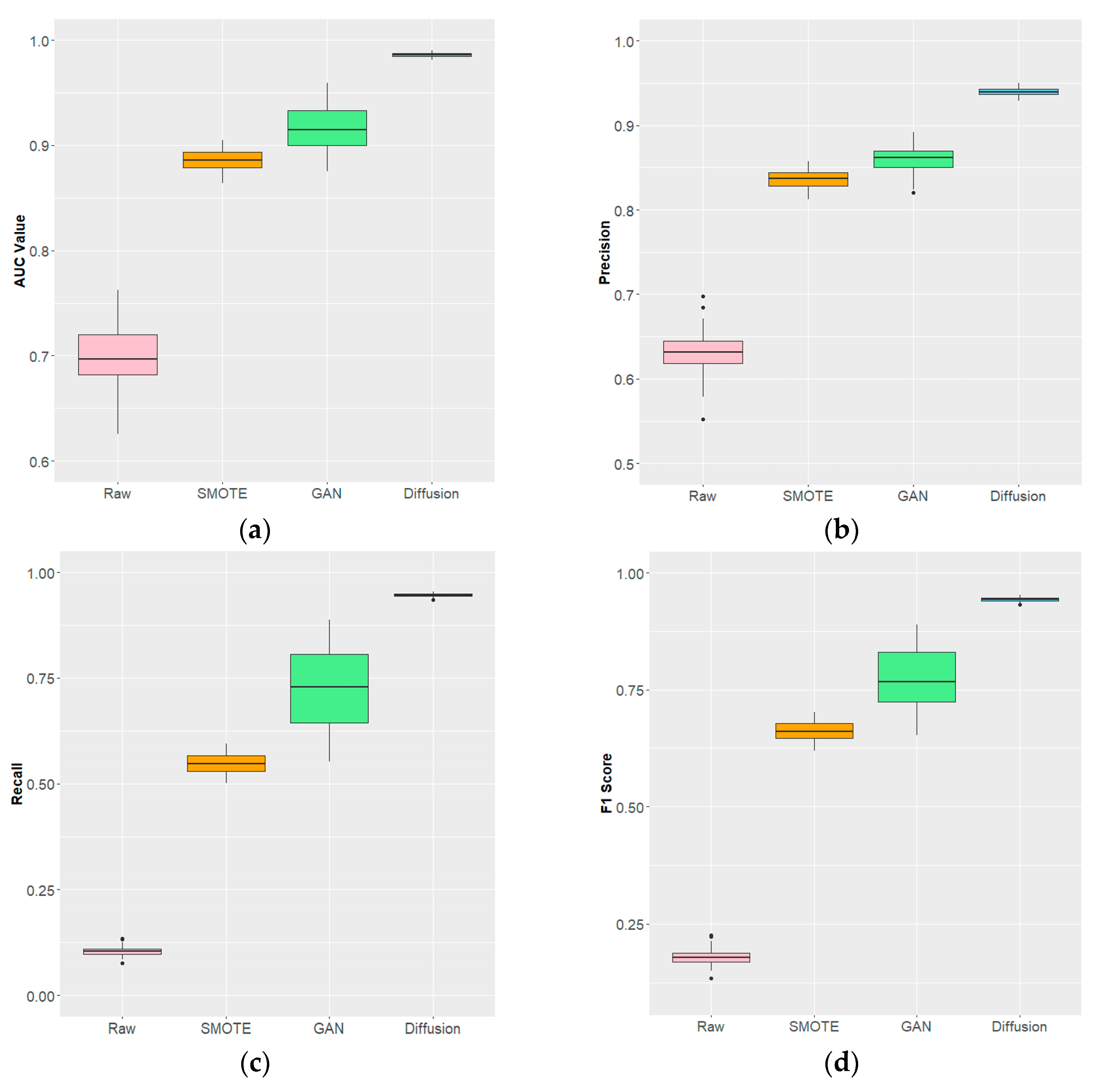
| Column | Column Name | Sample Data | Column | Column Name | Sample Data |
|---|---|---|---|---|---|
| 1 | ID | 435 | 10 | Num_Lanes | 4 |
| 2 | Route | Gyeongbu | 11 | Delta_Slope | 0 |
| 3 | Direction | 2 | 12 | Delta_Radius | −5000 |
| 4 | Milepost_S | 132.86 | 12 | Delta_Lanes | 0 |
| 5 | Milepost_E | 133.12 | 14 | AADT | 72,005 |
| 6 | Distance | 0.26 | 15 | Max_Speed | 100 |
| 7 | Slope | 0.9079 | 16 | Min_Speed | 100.2 |
| 8 | Curve_Radius | 5000 | 17 | Mean_Speed | 110.03 |
| 9 | Curve_Length | 260 | 18 | Consequence | 0 |
| Causal Factor (Code) | Road Geometry | Lines and Lane Markings, and Road Surface Color | Pavement Condition | In-Vehicle Sensor | |||||
|---|---|---|---|---|---|---|---|---|---|
| Leaning to One Side (1) | Lane Departure (2) | Leaning to One Side (3) | Zigzag Driving Maneuver (4) | Lane Departure (5) | Zigzag Driving Maneuver (6) | Lane Departure due to Severe Weather (7) | Collision Risk due to Delayed Vehicle Recognition (8) | Leaning or Lane Departure due to Shadows (9) | |
| Number of Disengagement Events | 217 | 2 | 79 | 6 | 3 | 5 | 5 | 47 | 14 |
| Disengagement Occurrence Frequency (per km) | 14 | 1585 | 40 | 528 | 1056 | 634 | 634 | 67 | 226 |
| Actual Class | |||
|---|---|---|---|
| Positive | Negative | ||
| Prediction Class | Positive | True Positive (TP) | False Positive (FP) |
| Negative | False Negative (FN) | True Negative (TN) | |
| Model | AUC Value |
|---|---|
| Raw | 0.734 |
| SMOTE | 0.886 |
| GAN | 0.927 |
| Diffusion | 0.987 |
| Model | F1 Score |
|---|---|
| Raw | 0.194 |
| SMOTE | 0.694 |
| GAN | 0.87 |
| Diffusion | 0.943 |
| Model | AUC | Precision | Recall | F1 Score |
|---|---|---|---|---|
| Raw | 0.699 ± 0.026 | 0.634 ± 0.027 | 0.105 ± 0.011 | 0.18 ± 0.017 |
| SMOTE | 0.886 ± 0.01 | 0.836 ± 0.011 | 0.548 ± 0.024 | 0.662 ± 0.021 |
| GAN | 0.916 ± 0.021 | 0.859 ± 0.015 | 0.726 ± 0.098 | 0.778 ± 0.065 |
| Diffusion | 0.986 ± 0.002 | 0.939 ± 0.004 | 0.946 ± 0.004 | 0.943 ± 0.004 |
Disclaimer/Publisher’s Note: The statements, opinions and data contained in all publications are solely those of the individual author(s) and contributor(s) and not of MDPI and/or the editor(s). MDPI and/or the editor(s) disclaim responsibility for any injury to people or property resulting from any ideas, methods, instructions or products referred to in the content. |
© 2024 by the author. Licensee MDPI, Basel, Switzerland. This article is an open access article distributed under the terms and conditions of the Creative Commons Attribution (CC BY) license (https://creativecommons.org/licenses/by/4.0/).
Share and Cite
Lee, D. Driving Safety Area Classification for Automated Vehicles Based on Data Augmentation Using Generative Models. Sustainability 2024, 16, 4337. https://doi.org/10.3390/su16114337
Lee D. Driving Safety Area Classification for Automated Vehicles Based on Data Augmentation Using Generative Models. Sustainability. 2024; 16(11):4337. https://doi.org/10.3390/su16114337
Chicago/Turabian StyleLee, Donghoun. 2024. "Driving Safety Area Classification for Automated Vehicles Based on Data Augmentation Using Generative Models" Sustainability 16, no. 11: 4337. https://doi.org/10.3390/su16114337
APA StyleLee, D. (2024). Driving Safety Area Classification for Automated Vehicles Based on Data Augmentation Using Generative Models. Sustainability, 16(11), 4337. https://doi.org/10.3390/su16114337





